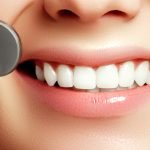Replacing your toothbrush is one of those kind of vague things that we know we need to do, just not exactly how frequently. If you take the advice of the American Dental Association, you’ll be switching it up every three to four months. That seems reasonable, except for the problem that most of us don’t pay attention to when we last changed it. So, in reality, you end up guessing when a toothbrush’s time might be up or waiting until the bristles begin to fray to give you a sign. But you might not want to wait too long if you use some popular brands of toothpaste. New research suggests that harmful chemicals present in toothpaste can remain on toothbrushes and build up over time.
The study, which was conducted at the University of Massachusetts in Amherst, found that triclosan, a dangerous additive to certain toothpastes, remains on toothbrush bristles accumulating over time and releases unsafe levels of the chemical with each brushing.1 Han, Jie; et al. “Nylon Bristles and Elastomers Retain Centigram Levels of Triclosan and Other Chemicals from Toothpastes: Accumulation and Uncontrolled Release.” Environmental Science & Technology. 25 October 2017. Accessed 30 October 2017. http://pubs.acs.org/doi/10.1021/acs.est.7b02839. For the experiment, the investigators collected 22 varieties of toothbrushes and an array of different toothpastes.
After simulating a twice a day routine of brushing teeth with assorted combinations of toothbrush types and toothpastes over a period of three months, they tested the toothbrushes for the presence of triclosan. The researchers discovered that triclosan remained on the bristles of more than one-third of the toothbrushes and had actually accumulated to levels the equivalent of seven to 12 times the amount we would normally be exposed to during a single session of tooth brushing.
The amount of lingering triclosan varied somewhat among toothbrush styles. Those retaining the largest quantities of triclosan tended to be toothbrushes that offer polishing cups (which have a circular design meant to clean more thoroughly and remove stains) or cheek and tongue cleaners (which are raised surfaces that purportedly help remove bacteria from the mouth). These extra features mainly consist of an elastomer, a rubbery material good at retaining its shape, which may absorb the chemicals more readily. But even among standard toothbrushes—including two types of children’s toothbrushes—triclosan buildup often occurred.
In a second phase of the experiment, the researchers began using only triclosan-free toothpaste but on the same toothbrushes used previously. They noted that despite the fact that no additional triclosan could accumulate, the toothbrushes still released the chemical for two weeks after the switch.
These results are extremely concerning. Triclosan is an antibacterial substance known to be an endocrine-disrupting chemical, which means it behaves similarly to hormones and adversely affects the endocrine system. It was recently banned by the Food and Drug Administration from soaps, wipes, and body washes, but bizarrely, not from toothpastes. Triclosan is considered useful in toothpaste for its potential to prevent cavities, plaque, and inflammation of the gums, but even if it can help in these areas, the health risks—which include central nervous system problems, thyroid dysfunction, reproductive disorders, and breast cancer—are certainly greater.
So, what can you do to avoid triclosan exposure and still maintain good dental hygiene? Start by looking at the label of your current brand of toothpaste to see if it contains triclosan. If it does, dispose of that as well as your toothbrush and go shopping for some triclosan-free toothpaste. One of the most popular brands, Colgate Total, still includes triclosan in their line of products, but plenty of others do not. Crest, Tom’s of Maine, and Nature’s Gate are just a few you can purchase that contain no triclosan.
And don’t forget to check your other personal products for triclosan while you’re cleaning out your bathroom. Many deodorants, shaving creams, and cosmetics still contain this chemical, adding to your daily exposure and potentially putting you at risk for a variety of health problems. If triclosan is listed as an ingredient, toss it and do some research to find alternative products that are triclosan-free.
References
| ↑1 | Han, Jie; et al. “Nylon Bristles and Elastomers Retain Centigram Levels of Triclosan and Other Chemicals from Toothpastes: Accumulation and Uncontrolled Release.” Environmental Science & Technology. 25 October 2017. Accessed 30 October 2017. http://pubs.acs.org/doi/10.1021/acs.est.7b02839. |
|---|












Great article on the evils of
Great article on the evils of Triclosan. NOT a very comprehensive article about dental care in general. First, Jon, in the very first paragraph you raised the issue of “trusting the American Dental Association?” Are you serious? How can anyone trust an establishment that has out and right LIED to hundreds of millions of Americans for the last 165 years – claiming that Mercury Amalgams were SAFE? Do you want to talk about toxic Fluoride that the ADA insists on putting in our water? That too is approved by our government – but you’ve already stated how trustworthy our gov/FDA is when it comes to Triclsan. Why would we trust them regarding Fluoride? FORGET all commercial toothpastes. Rinse your mouth thoroughly with baking soda, spit, then brush with 1/2 tsp coconut oil and one drop of Clove Essential oil (or Cinnamon EO, or Peppermint EO). All four of these oils are safer then Triclsan AND BETTER antibacterials. All for 1/10th the cost of commercial toothpaste. I stopped drinking or using Fluoridated water and started brushing with baking soda and coconut oil TEN years ago. Since then, every checkup has been better than the one before.
I’ve read that glycerin in
I’ve read that glycerin in toothpaste is harmful. Is that correct? What about the “mud” toothpastes that are now being marketed? Is there one that you can recommend as being good to use?